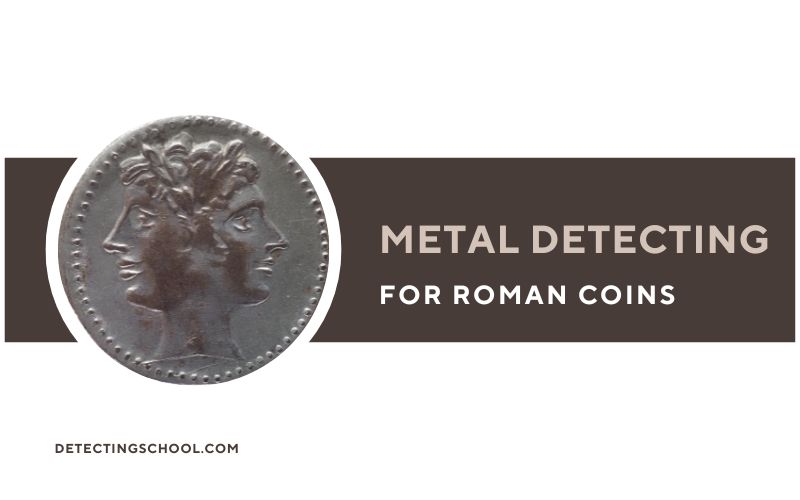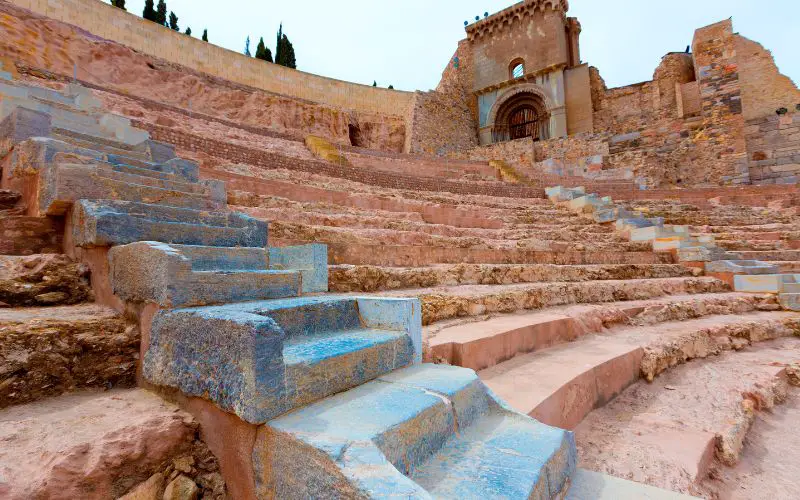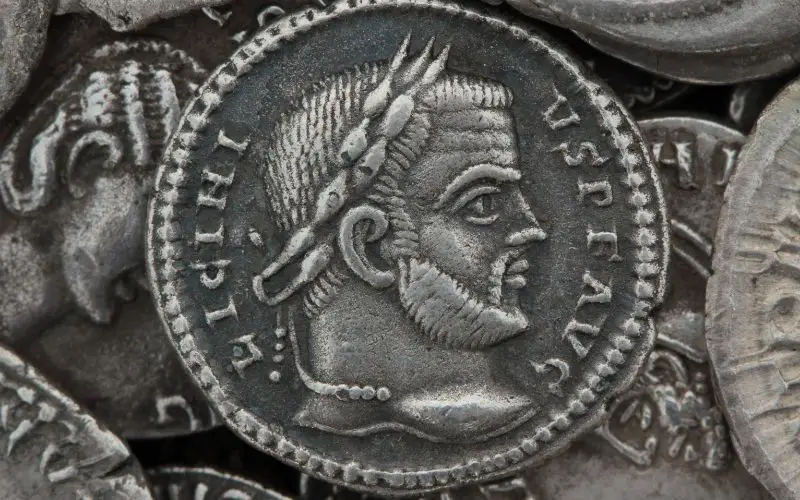
In this article we will address an interesting aspect of the powerful empire of Rome by diving into the world of detecting for Roman coins …
You might be surprised that these ancient coins are probably waiting for being discovered beneath your very feet …
You will learn some clever ways to locate, understand and preserve these valuable artifacts.
So, without further ado, Let’s dive in!
Key Takeaways
- Roman coins offer a legit connection to ancient history and artistry. They also represent an important collector value.
- Recognizing a Roman coin’s value is an important skill that require assessing rarity, condition as well as historical authenticity.
- Lesser-known sites like ancient trade routes can have a huge potential when it comes to unclaimed Roman coins.
Why should you look for Roman coins?
Hunting for Roman coins is probably the best way to connect enthusiasts like you to ancient history. This will give you unmatchable insights into Rome’s vast empire and its socioeconomic dynamics.
Each coin holds tales of emperors, battles and pivotal moments of this era. They also have intricate designs and inscriptions that reflect some astonishing artistry and messaging from that period.
Keep in mind that beyond historical allure, some Roman coins, due to their rarity can be highly valuable to collectors and be worth literally fortunes!
Ideal locations for detecting Roman coins …

To be able to detect roman coins, you’ll need to choose locations that have witnessed significant Roman activity … Preferably less frequented by modern detectorists.
Below I share 6 locations:
- Ancient Trade Routes: Lesser-traveled roads that use to connect major Roman settlements can hold many lost coins from many centuries of commerce.
- Old Roman Villa Sites: In most cases, known villas have been picked over. Try to opt for undiscovered sites in regions that were once under Roman control … These can be golden!
- Battlefield Fringes: Try to have a short list of known Roman battle sites … Then go for peripheral areas of those sites. They might hide coins dropped in the heat of conflict!
- River Crossings and Fords: These places are ones with less competition … They were crucial for trade and troop movements. It is normal that over time, coins could’ve been dropped or lost in the waters.
- Ancient Marketplaces: Most detectorists go for central markets that are obvious spots … However, you can target smaller satellite market areas as they could still possess unclaimed coins.
- Temporary Military Camp Sites: If you’ve read some Ancient Roman history, you will notice that Romans often set up temporary encampments. Those locations might still house forgotten coin caches.
Metal detector recommendation for Roman coins …
The Garrett Ace Apex (Check it Here at Amazon) is one of the best models when it comes to versatility and precision … You can use it for all your relic hunting efforts including Roman coins.
Its Multi-Flex technology will help you to target specific metals like bronze, silver or gold found in Roman coins.
Its ground balance is powerful enough to ensure a reliable performance, even in mineralized European soils where Roman coins often lie!
Finally, it is lightweight and ergonomic which facilitates prolonged searches and maximize your chances of unearthing ancient treasures.
It is worth mentionning that white detectors are also decent for coins!
Obscure Techniques for detecting and unearthing these coins
Using a pulse induction detector or a metal detector with a superior ground balance in mineralized soils, is almost like a cheat code … It can immensely enhance your chances of finding Roman coins!
Ground balancing is not an easy task though … You need to experiment on different terrains (otherwise, you’ll find your detector in situation where it beeps for no reason)
You can also search an area in perpendicular patterns for thorough coverage … For coin spills, always try to detect in spirals outward from the initial find …
It is better to consider using smaller coils. They are useful when it comes to target separation and pinpointing.
Night detecting (Learn about nigh detecting) can avoid disturbances, with the added benefit of cooler ground temperatures which has the big benefit of improving conductivity and depth range.
Cleaning and preserving Roman coins …
When cleaning ancient coins (especially Roman coins) try to use gentle methods to preserve their historical value:
- Begin with a distilled water soak to loosen surface dirt.
- Then, softly brush with a toothbrush.
- Avoid abrasive materials and chemicals.
- In case you are dealing with stubborn encrustations, you can try olive oil soaking for several weeks might help.
Once cleaned, it is important to store coins in individual acid-free flips and keep them away from humidity and light.
For higher-value Romain coins, I highly recommend seeking professional advice before cleaning!
How to recognize Roman coins value?

The first and probably most important factor is Rarity. This is due to limited minting or depicting short-reigned emperors.
Coin condition is also important, this includes elements like legible inscriptions, clear images, and minimal corrosion, also factors in.
Historical significance, like coins marking notable events, can significantly attract higher prices.
Try also to check for elements of Authenticity … Research hallmarks, strike patterns, and known forgeries.
If you like numismatic, then I highly recommend having a look at this beginners guide to collect coins! You will learn a LOT!
What metals are in Roman coins?
Roman coins were predominantly made from 3 main metals:
- Gold (aureus)
- Silver (denarius)
- And Bronze (including the sestertius, dupondius).
As the empire evolved, coinage experienced debasement, leading to the introduction of billon … This one is a mixture of silver and base metals, primarily copper.
Keep in mind that Copper was also used for lower denominations like the quadrans!
In is worth mentioning that the metal of a Roman coin often reflects its era, with early Republic coins primarily in silver and bronze. However, later Empire coins frequently used debased metals due to economic challenges.
Are Roman coins magnetic?
Most authentic Roman coins aren’t magnetic. Since most of them were made of gold, silver, bronze, or a mix of copper and tin (billon) … These metals, only certain corroded forms of bronze might show slight magnetic qualities, but it’s usually weak.
Keep in mind that modern forgeries, especially those made of iron or steel, will be strongly magnetic.
It is important to note that a magnetic test alone isn’t definitive for authenticity, yet it remains a very useful tool in initial evaluations.
Final Thoughts …
The quest for Roman coins is more than just a simple treasure hunting journey … I rather see it as a unique adventure worth experiencing!
Each coin holds a history part of emperors, battles, and Rome’s majestic legacy.
That’s why metal detecting for Roman coins is definitely worth it!
From my experience, people interested in coins are also interested in jewelry … If this is your case, then try to have a look at these tips & machines to find jewelry using a metal detector!
